Since we could certainly all use a bit more fun in our lives, it was recommended to us that each session in the Klamath Mountains Natural History winter webinar series feature its own pairing — food and/or bev.
Brilliant. And why not.
So what pairs well with endemic salamanders, limestone caverns, or the last glacier in the Klamath Mountains?
I don’t know either, and that’s why I asked our presenters for their expert recommendations.
Part 1: Intro to the Klamath Mountains + The Last Glacier
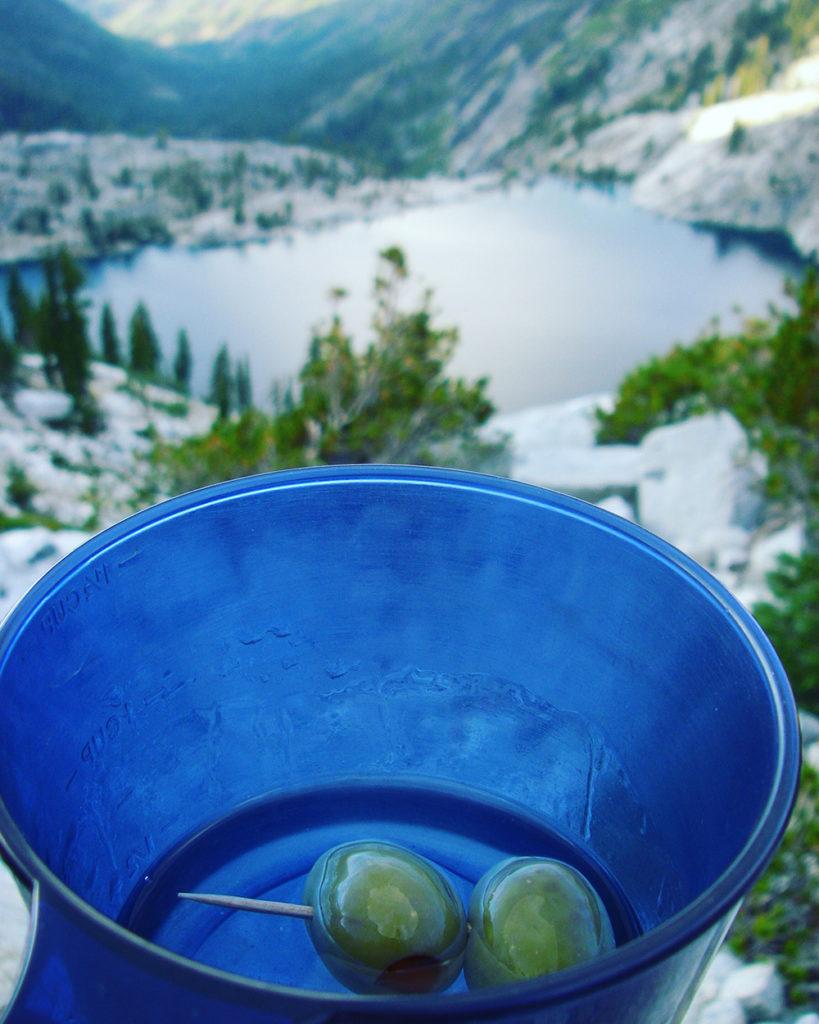
I present to you the Glaciertini: a fine drink to accompany the first session in this 10-part series where Justin Garwood tells the story of the Klamath Mountains’ Last “tini” Glacier. It also happens to be the signature cocktail of his research team. Per his and colleague Mike van Hattem’s instructions:
- When setting out on your expedition, allow olives (3 per serving) to slosh marinate in vermouth over a 10 mile hike.
- Chill vodka, olives, and cup (titanium preferred) in a 34 degree glacier melt stream for 4 hours.
- Combine and sip responsibly on a chunk of granite while taking in a hard earned, grand alpine view.
Grizzly Lake (pictured above) in the Trinity Alps is an ideal location to experience a Glaciertini.
Part 2: Fire in the Klamath Mountains
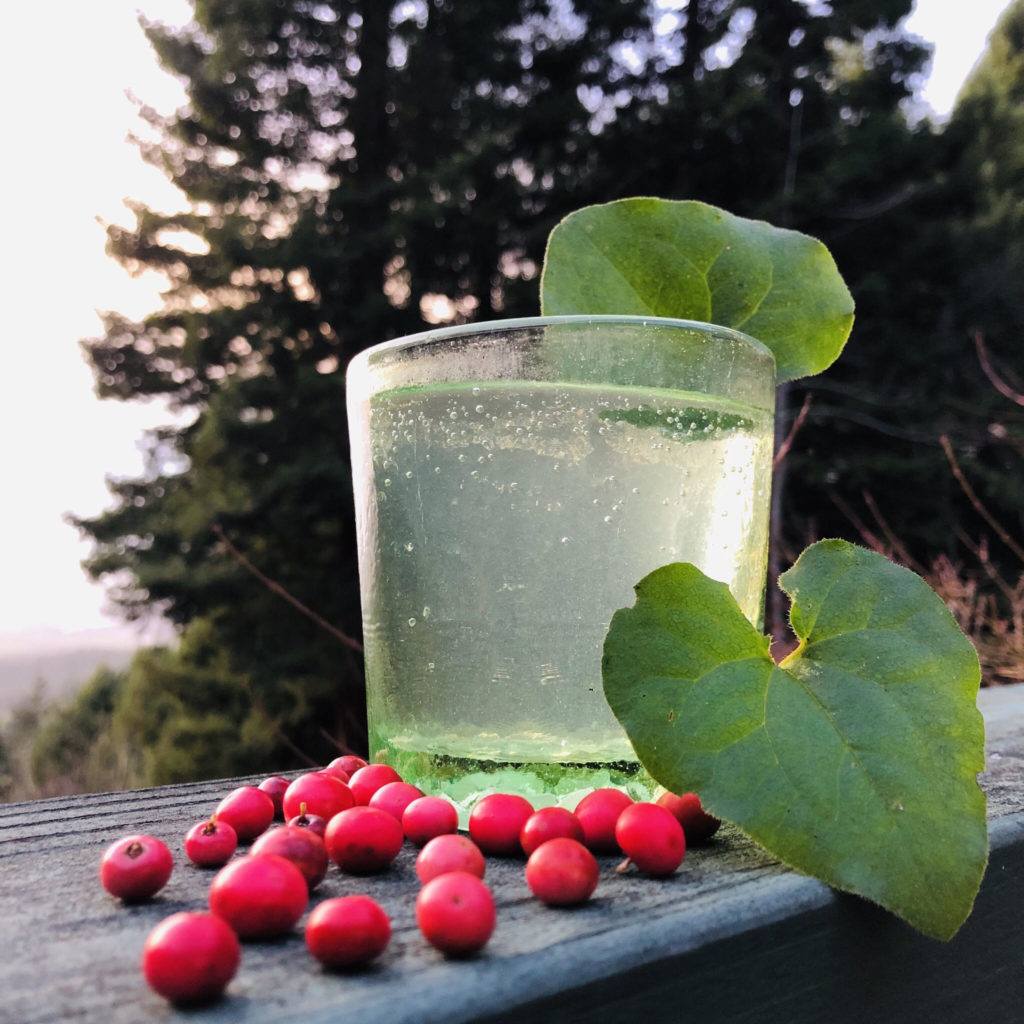
To accompany “Part 2: Fire in the Klamath Mountains” we have a spicy twist on a traditional beverage made with the berries of a plant who’s entire ecology is sculpted by fire: manzanita. Manzanitas are also the most common shrub in California with 10 taxa growing in the Klamath Mountains.
Please enjoy a Sparkling Manzanita & Wild Ginger Cider as you learn about Fire Ecology with Jeff kane.
There is some collecting of wild edible plants here, so let’s head outside!
Manzanita berry cider is a traditional beverage of indigenous people throughout the west, though there is debate on the best ripeness level of berries to use. Some suggest green, others red, still others dried and brown, but the most popular seems to be green with a blush of red.
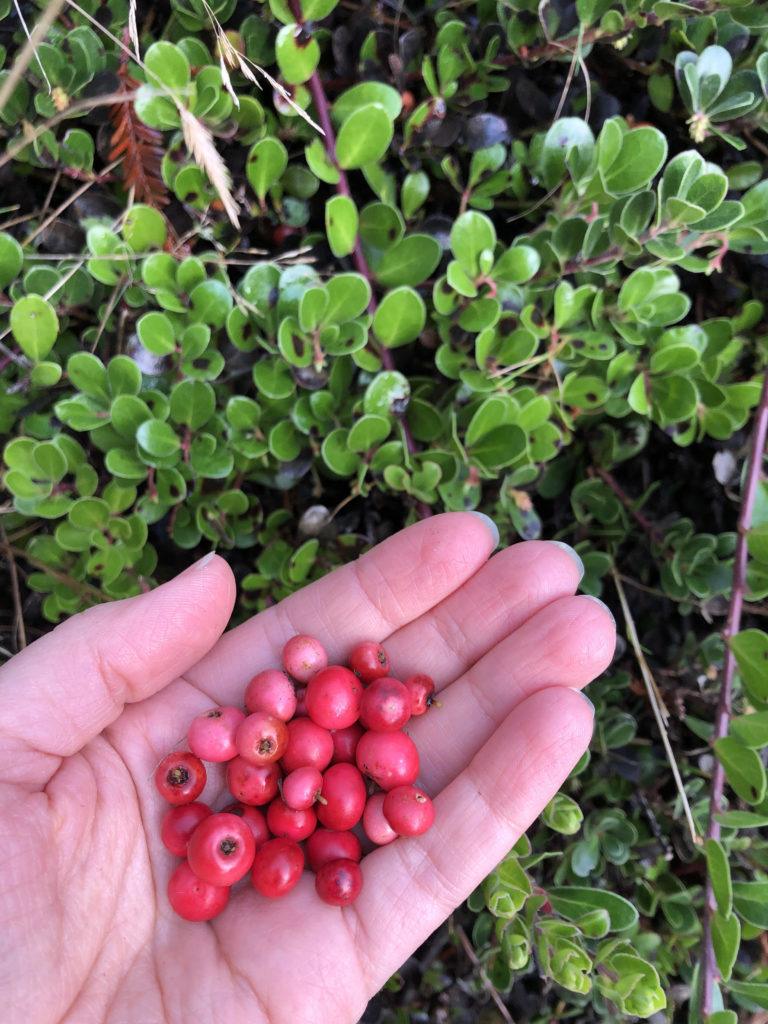
You will need about ¼ cup of berries (ripeness of your choosing) per 1 cup of water. Any species of Arctostaphylos* that grows in abundance will do. I used Arctostaphylos uva-ursi, AKA kinnikinnick or bearberry. Boil water, pour over your berries, and steep for 15 minutes. Gently smash berries and allow to infuse overnight. The next day pour through a fine mesh strainer and stick in your fridge. Sediment will settle to the bottom. Decant off Manzanita Cider, which has a refreshing lemony apple flavor. Enjoy as is, sweeten with a bit of honey, or spiff it up…
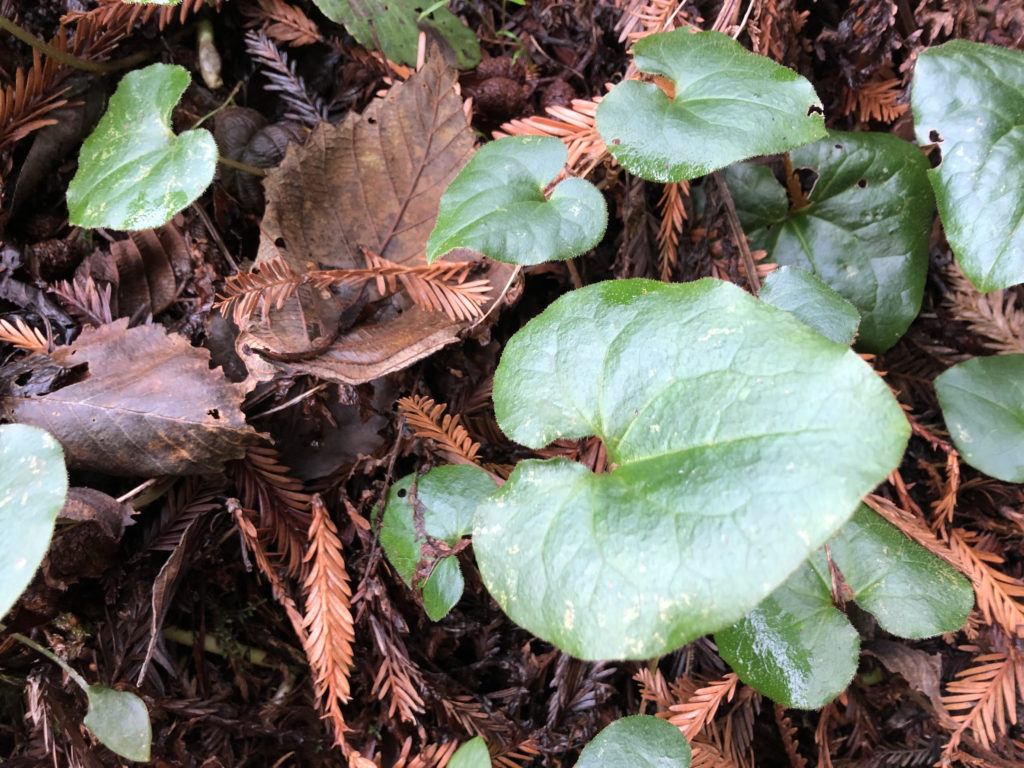
If you haven’t tried it, wild ginger (Asarum sp.) really does taste like especially potent ginger. A little goes a long way! Wild ginger grows along the forest floor with long white rhizomes hiding in the duff.
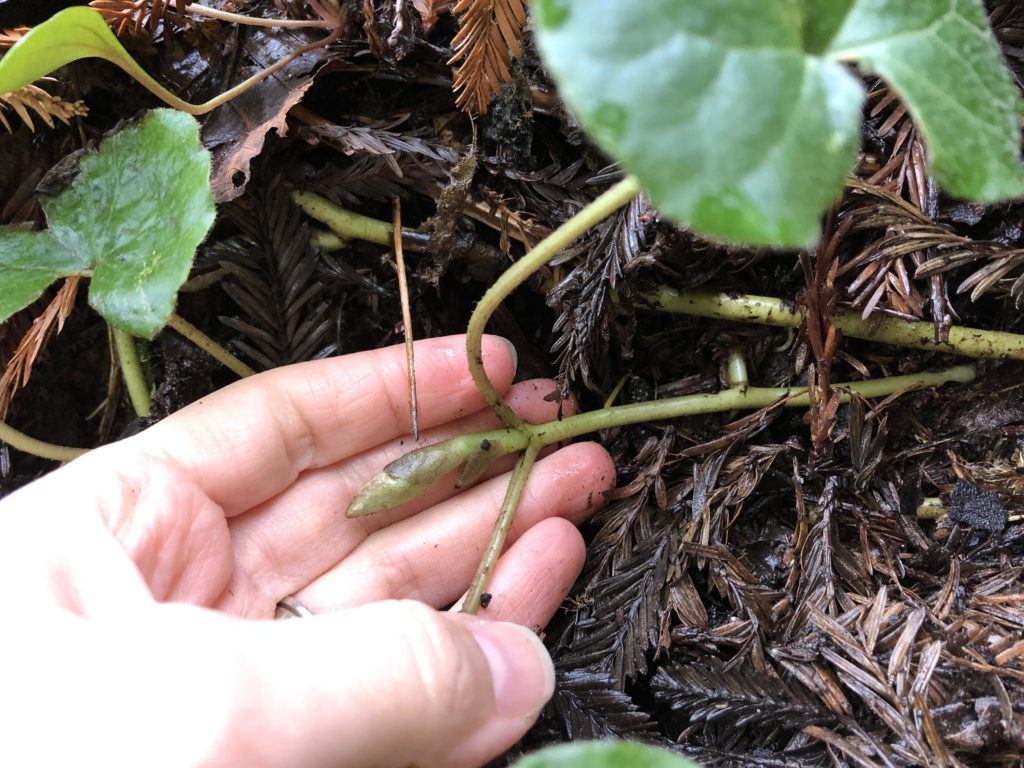
To harvest a piece in the least disruptive way possible, find the growing tip of a rhizome in the duff and harvest just a few inches (as opposed to harvesting cutting off a chunk “mid-rhizome” along with the few leaves it will have attached. If you see wild ginger flowers, lucky you! Be sure to leave them undisturbed.

Back at home, boil a cup of water and pour over your wild ginger. Allow to steep for 15 minutes.
Find a pretty glass, pour in 1/3 manzanita cider, 1/3 wild ginger tea, and 1/3 bubbly water. For an EXTRA FANCY experience add a squeeze of lemon. I know… WHOA!
*Need help identifying the species of you have at hand? Check out Field Guide to Manzanitas.
Part 3: Geology of the Klamath Mountains
When I asked our Geology author and presenter Mark Bailey for his food/bev pairing suggestions he gave it but a moment’s thought… “January 21st, as in the day following January 20th? I think champagne and chocolate are in order!”
I’d like to recommend keeping it Klamath-centric with your chocolate and bubbly drinks:
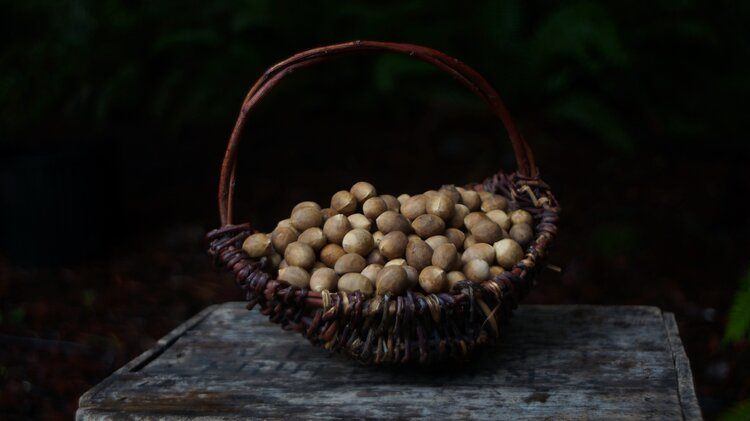
The nuts of the California bay tree (Umbellularia californica), which grow throughout the Klamath Mountains (but especially in the western portion) taste remarkably like chocolate when roasted and combined with a touch of sweetener. They also possess stimulating qualities much like an espresso bean. Here are some tips from Bay Nature for harvesting and processing your own, though we are a tad past season for bay nut gathering. Paleotechnics offers even more details on harvesting, sorting, processing, storing, and using your own bay nuts.
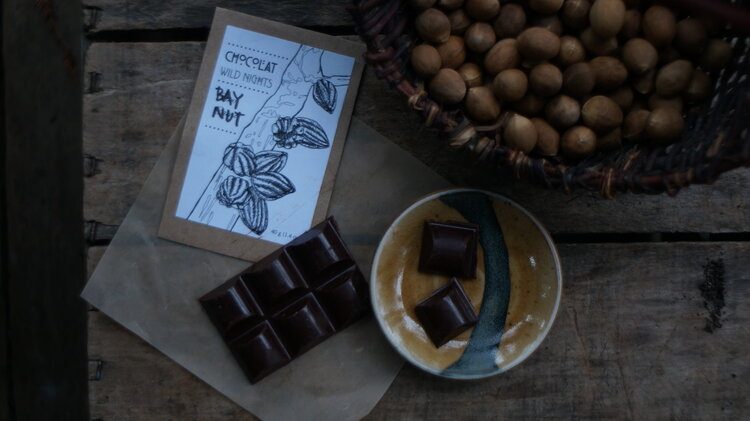
Luckily southern Humboldt County’s Gretchen Gavlahn has already collected nuts and transformed them into chocolate if you’d like to try a bar! Pick one up here.
I know of one additional chocolatier in the Klamath. Nena Creasy crafts her incredible “Nena’s Chocolates” (without bay nuts) in the heart of the Klamath Mountains: where the Salmon and Klamath Rivers meet at Somes Bar, CA. They are available direct from her shop as well as the Seiad Store, Salmon River Outpost in Somes Bar, Kingfisher Market in Happy Camp, Nature’s Kitchen in Yreka, Directions Clothing and Berryvale in Mount Shasta, River Song Market in Willow Creek, Bayside Garden Supply in Arcata, and Shop n Kart in Ashland.
Part 4: Climate of the Klamath Mountains
Seemed like talking about Climate might be a good excuse for a hot beverage — ya know, so our pairing also reflects a warming trend.
In an effort to support small local businesses, this week we’re featuring folks who craft small-batch spirits, distilled and bottled in Humboldt County, CA. Alchemy Distillery also partners with Humboldt farmers to supply grain for their spirits (which they mill on site), then feeds the animals back on the farm with the spent grain. It’s a beautiful circle.
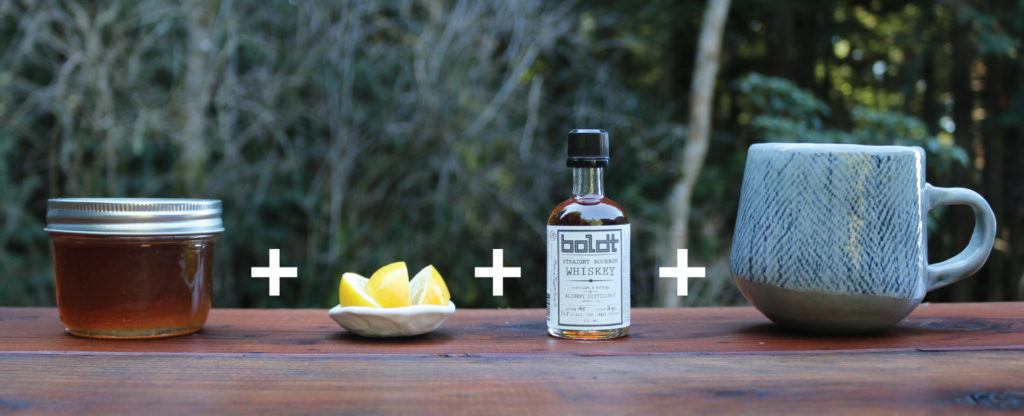
I asked Alchemy’s Amy Bohner for her recommendation: the Boldt Hot Toddy. Amy is conveniently bottling up their Boldt Bourbon Whiskey in adorable little 50ml glass bottles, which I know many folks will enjoy toting along on a backpacking trip.
To keep your hot toddy superbly local combine:
- Neighborhood Honey (Thanks Tanya and Calder!)
- Lemon from a friend’s south-facing garden (Thanks Marie and Steve!)
- Boldt whiskey* (Thanks Amy!)
- Boiling water in a favorite mug (this one was handbuilt right at my kitchen table, which I’d say earns an A+ for local)
*For an alcohol-free version, include a few slices of fresh ginger instead.
Alchemy Distillery spirits are able to be shipped anywhere through Bitters and Bottles, and the adorable 5o ml Boldt Whiskey bottles are sold at Wildberries Marketplace and the North Coast Co-op in Arcata, CA.
Part 5: Rivers of the Klamath Mountains
Tim Palmer is an inveterate river-lover who has spent decades of his life canoeing, rafting, researching, photographing, writing about, and speaking about rivers. I asked him for his recommended pairing for his “Rivers of the Klamath” session, and though he was tempted to suggest a killer-wild-salmon dinner, these days he’s seeking a carbon-neutral lifestyle and has become an all-plant consumer.
Instead, he offers you his favorite Un-Fish Tacos! Per his instruction:
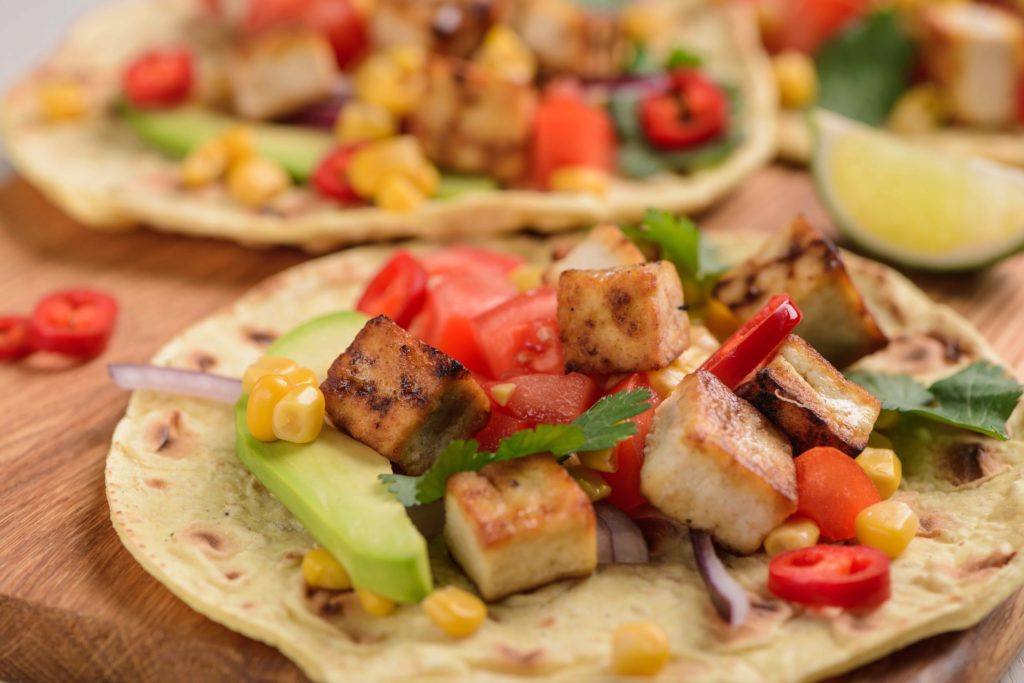
- In olive oil, grill up thin slices of firm tofu until dry and brown on each side.
- Sauté onions, garlic, red peppers, and any other organic vegetables you want.
- Make or buy a container of good salsa.
- Warm corn tortillas with olive oil in the skillet.
- Slice a lot of avocado on top, eat and watch the show!
And for washing down your Un-Fish Tacos, craft beer enthusiasts certainly have many river-themed brews to choose from. Perhaps the most obvious is Yurok Tribe-owned Mad River Brewing’s River Days IPA. Six Rivers Brewery‘s Bluff Creek Pale Ale, which is named after the tributary of the Klamath River famous for the Bigfoot footage filmed by Patterson and Gimlin there in 1967, is also an excellent thematic choice.
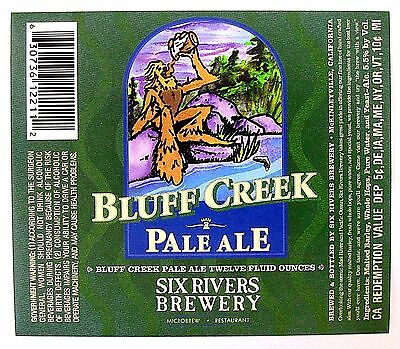
While not explicitly river-themed, I would be remiss if I did not also mention a few of the craft brewing establishments in the Klamath Region: Etna Brewing Co., Paystreak Brewing in Etna, Trinity County Brewing Co. in Weaverville, Dunsmuir Brewery Works, Caldera Brewing Co. in Ashland, Standing Stone Brewing Co. in Ashland, and Wild River Brewing and Pizza Co. in Cave Junction and Grants Pass.
Enjoy!
Part 6: Plant Communities of the Klamath Mountains
Sometimes once a name is gifted to you, there’s no shaking it off. Such is the case for Michael Kauffmann, AKA Conifermann (thank you Ian Nelson and Brandon Andre). Makes sense he wanted to feature Conifer Cocktails for his Plant Communities session!
But with such conifer diversity in the greater Klamath Mountains region (35 species, according to Conifermann), how do you choose just one?! Good news: many can be used interchangeably. Here’s a few ways to enjoy drinking conifer infusions, and a few species you need to avoid.
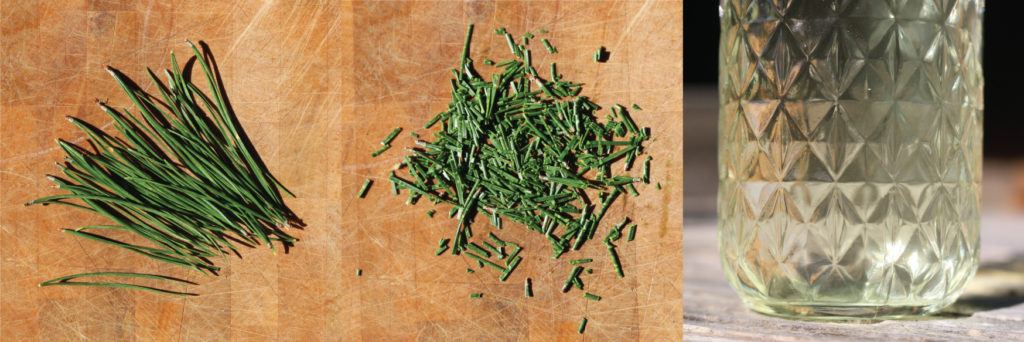
Steep a Cuppa
Making tea from conifer needles—especially pines—is probably the most mainstream way to drink a conifer. The tea is high in vitamin C and has a truly enjoyable, delicate, citrusy-evergreen flavor. And how high in vitamin C is this beverage? According to one study by the USDA and U.S. Forest Service of Eastern white pine (Pinus strobus), the amount of vitamin C (ascorbic acid) depends on the age of the needles you use:
- New needles: 0.72mg Vit. C per gram of needles
- 1 year old needles: 1.18 mg Vit. C per gram of needles
- 2 year old needles: 1.87 mg Vit. C per gram of needles
I know, when you think “vitamin C” you probably think “oranges.” So how does the typical orange measure up? According to the USDA, just 0.532 mg vitamin C per gram or orange!
While older needles clearly contain more vitamin C, they also impart more of a bitter flavor to your infusions. I recommend picking new, bright yellowy-green needles/tips from your conifer of choice for any of your teas or Conifer Cocktails.
For steeping up your cuppa, harvest a small handful of fresh needles/tips of choice, chop them up (to realease more of that sought after vitamin C), toss in a mug or jar, and cover with just boiled water. Cover and allow to steep at least 10 minutes before straining and enjoying. Went with the older needles, did you? Sweeten with some honey, honey. (Douglas-fir is also a simply delightful choice here!)
Conifer Cocktails
In the mood for something with a kick? Try infusing conifer needles into your clear, neutral spirit of choice. Vodka is perfect. Redwood, spruce (Sitka, Engelmann, or even Brewer), Douglas-fir, hemlock (western or mountain) and pine (western white is sublime) are all excellent choices.
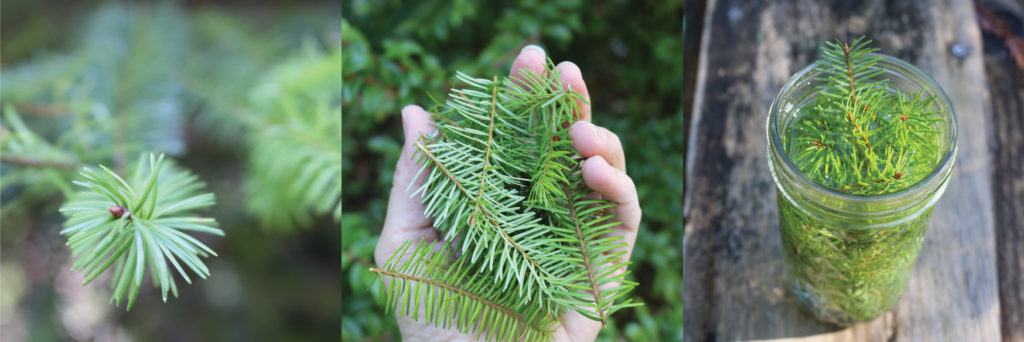
The recipe, if you could call it that, is beyond simple:
Collect fresh needles/tips, fill a jar, cover with vodka (especially from a regional distiller such as Humboldt Distillery’s organic vodka), screw the lid on tightly (this is key!), give it a good shake, and let it sit in a dark place for several days to a few months (shaking occasionally) before straining.
To enjoy: chill and sip straight if that’s your thing, or mix with something bubbly (like club soda) and/or sweetened (like ginger ale). The experience is aromatic and refreshing – like a walk through a conifer forest after a big wind and rain storm!
Conifers to Avoid
Out of an abundance of caution, please avoid during pregnancy and also steer clear of ingesting these species: yew, junipers, Monterey pine, ponderosa pine, and alcohol-based infusions of western redcedar (the potent and potentially toxic compound thujone is not soluble in water, but will readily infuse into your vodka).
Part 7: Fish, Amphibians, and Reptiles of the Klamath Mountains
So what does pair well with endemic salamanders and frogs? Since we began this series, I have had nothing but ???’s swirling in my head when thinking of how to tackle this session.
Leave it to our presenter and resident expert on all things Amphibian, Justin Garwood, to have the solution.
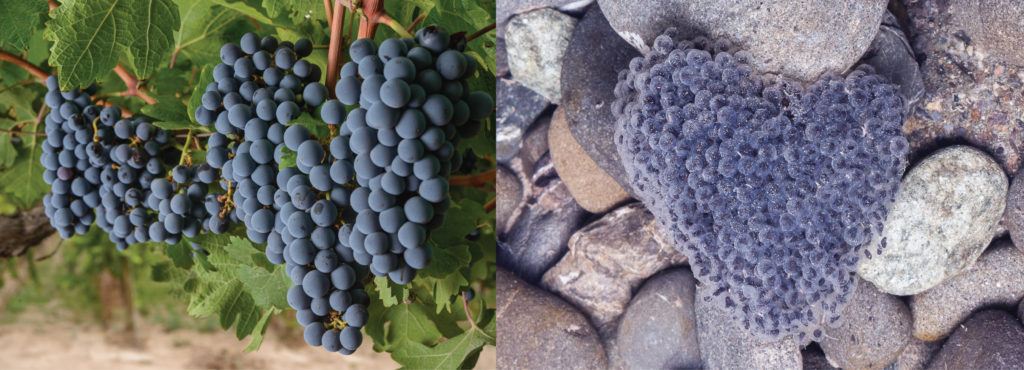
To accompany Part 7: Fish, Amphibians, and Reptiles of the Klamath Mountains he recommends a bundle of grapes resembling a clutch of frog eggs. Perfect.
And to wash them down? Red wine at ambient temperature so it’s a beverage that channels the ectothermic lives of the fishes, amphibians, and reptiles you’re learning about. Done!
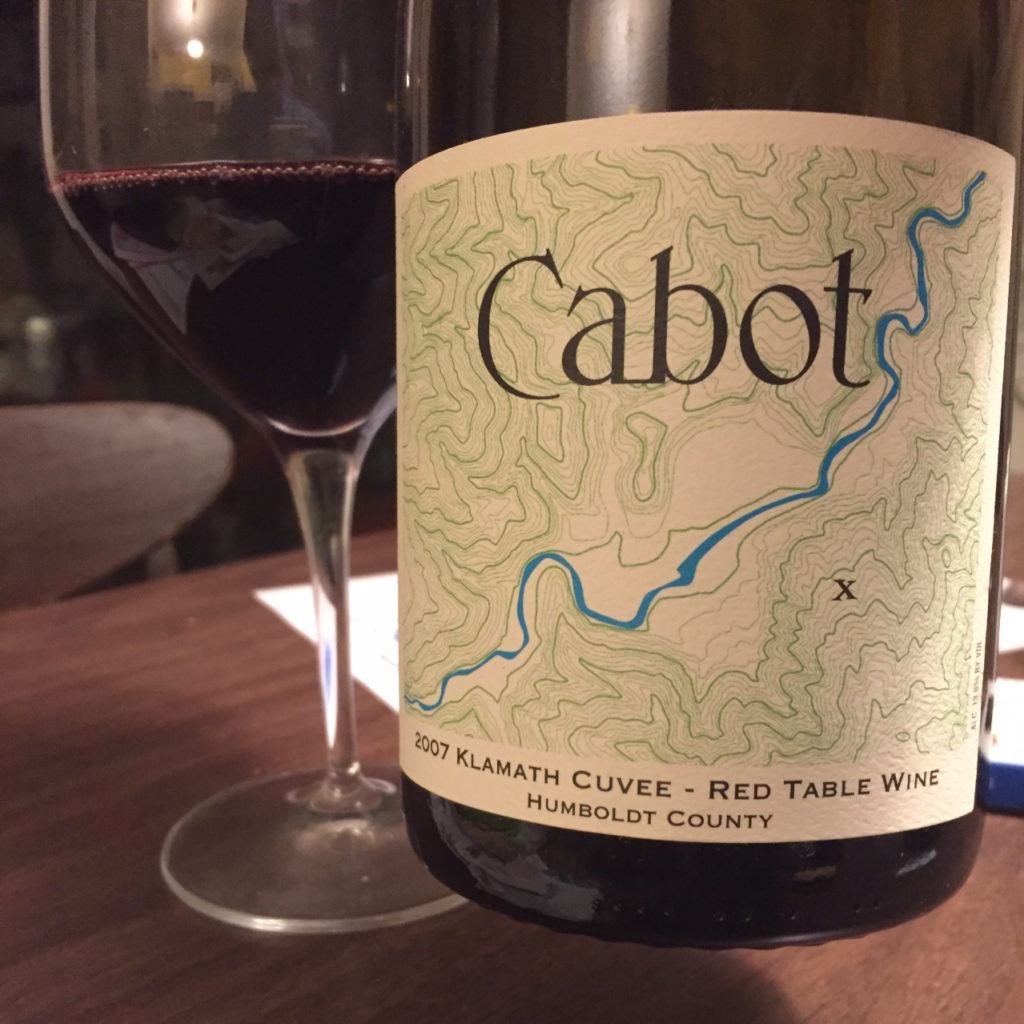
As for your wine, there are so many exquisite wineries to choose from in and around the Klamath Region (I’m looking at you, southern Oregon!), but here’s one from the heart of the mountains that could not be more thematic. Cabot Vineyards located along the Klamath River in Orleans has the northernmost vineyards and winery in California. And that label does speak right to my map-loving heart! Find your bottle here, or they will ship yours for a very reasonable price. Cheers!
Part 8: Mammals + Invertebrates of the Klamath Mountains
This week our 8 year old had the winning pairing idea: “If you can freeze flowers and berries in ice cubes for drinks, WHY NOT BUGS?”
Well, just off the top of my head, there are a few reasons.
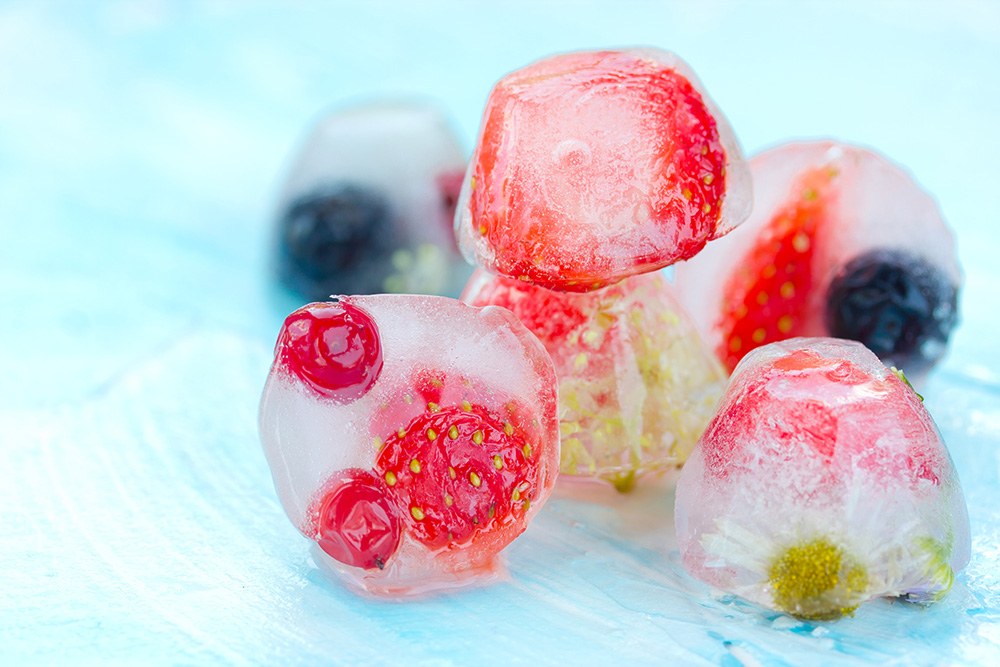
“But how about FAKE bugs?” Now there’s a suggestion with legs!
Here’s an idea for freezing ice cubes with critters inside made with green olive bodies and rosemary leaf legs. Probably goes nicely with Part 1’s Glaciertini!
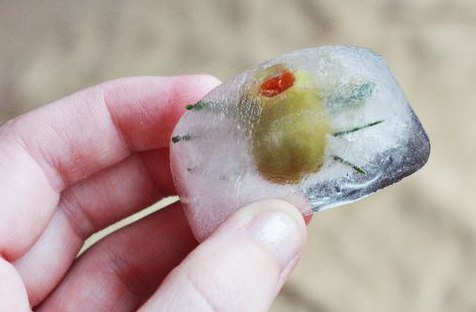
And if you’re not feeling quite so crafty, there’s the ol’ Halloween favorite of tossing a collection of plastic bugs in an ice cube tray, covering with water, freezing, and plopping one in the drink of an unsuspecting consumer. Ha! That will show them to leave their drink unattended while watching “Mammals + Invertebrates of the Klamath Mountains!”
Part 9: Forest Pests of the Klamath Mountains

Here’s a little pick-me-up in two versions featuring a tree decay fungus that is somewhat elusive to find but grows throughout the Klamath region and fortunately can even be cultivated: the lion’s mane (Hericium erinaceus on hardwood trees and Hericium abietis on conifers). These fungi are unmistakable when you see them fruiting on a fallen log or a dead part of a standing tree.
I’ve seen cultivated lion’s mane for sale at the Arcata Farmer’s Market. The recipes below use lion’s mane powder. You can dry any fruiting bodies you collect or buy and pulverize them to powder; as an easier but more expensive option, you can buy lion’s mane powder online or in stores (I’ve recently seen it at Murphy’s in Trinidad). As the blog with our featured recipe says, adding more mushrooms to your diet has a variety of beneficial health effects. The blog includes versions for a latte-style coffee drink with lion’s mane as well as a lion’s mane-spiked hot chocolate. Enjoy!
Part 10: Early Euroamerican Explorers of the Klamath Mountains
Ahh yes, it has been quite a journey, but we have finally arrived at the last stop on our Klamath Mountain tour. And for this stop we’re headed back in time to meet some of the early Euroamerican explorers of the Klamath Mountains.
When I asked our presenter, Jim Agee, for his pairing suggestion he was quick to suggest a cocktail that embodies an earlier era: The Old-Fashioned. An how old is the Old-Fashioned? Apparently the first recipe appeared in an 1862 publication and it has since been a staple at drinking establishments. Haven’t made your own? You’ll just need a a few ingredients and a glass. Find the simple recipe here.
And for an alternative for those of us not indulging in spirits, I like to think of early Euroamerican explorers fortifying themselves on their spring journeys with readily available green herbs–at least the smart ones anyways.
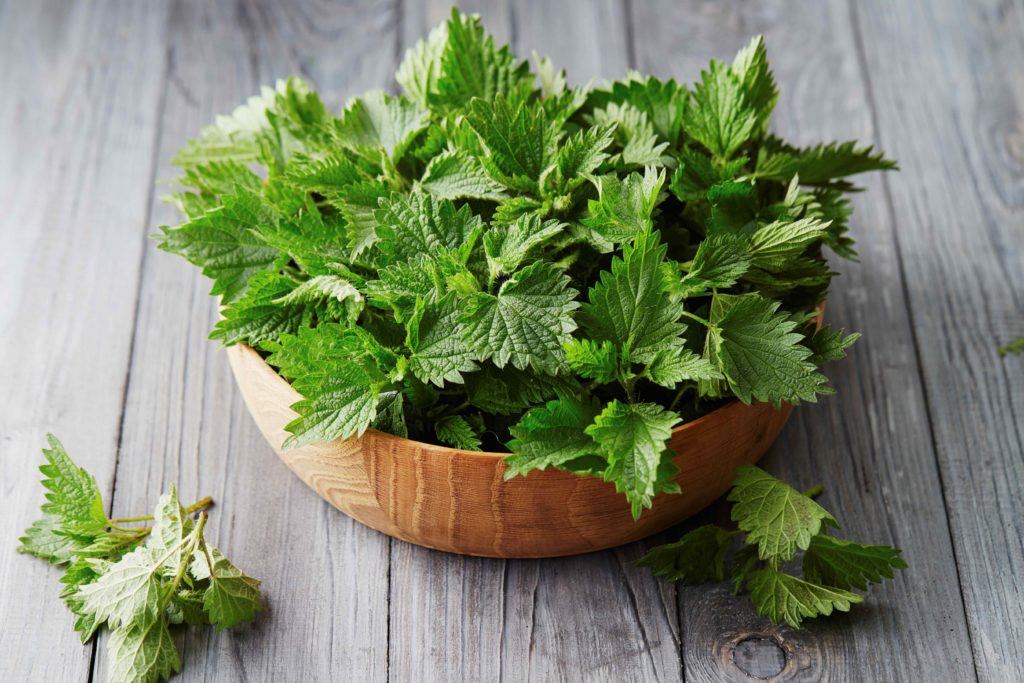
Spring is a time I look forward to each year if for no other reason than being able to pick fresh stinging nettle (Urtica dioica) to enjoy as tea, as a steamed green, in pesto, soup, and even in ridiculously creative culinary experiments like Nettle Cake.
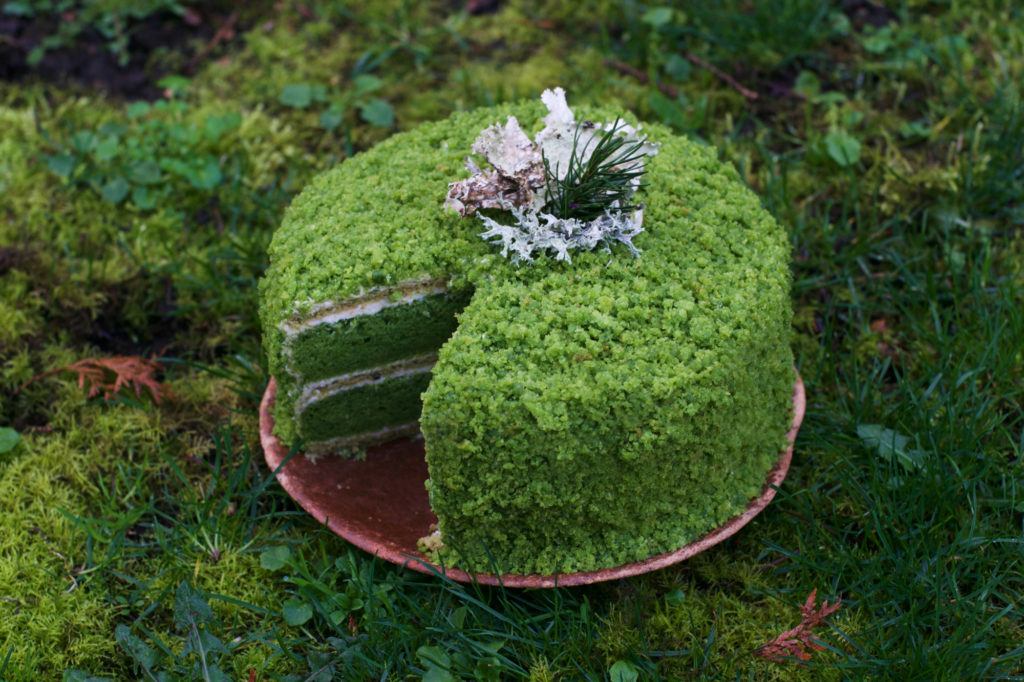
You simply cannot go wrong with a pot (or jar!) of nettle tea:
- Pick fresh stinging nettle (wear gloves and long sleeves!) before it flowers from as pristine of a location you can find (not a roadside) that is also a place you can ethically and legally harvest. (Never harvest more than a small amount from one patch.)
- Loosely fill a quart-sized jar with leaves and stems.
- Cover with boiling water and allow to steep for at least 30 minutes, but ideally overnight.
- Strain. Sip. Enjoy. And feel fortified with green spring nourishment!
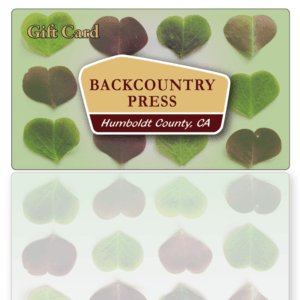
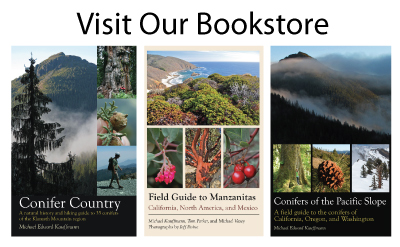
Love this. I’m into native edibles and related uses. Good topic for a book.
Fabulous! Thanks for the inspiration 😊
I am PSYCHED that lion’s mane grows in the Klamath. I take it daily to keep brain fog and dementia away–I’ve actually seen a big improvement in cognitive abilities!
awesome!